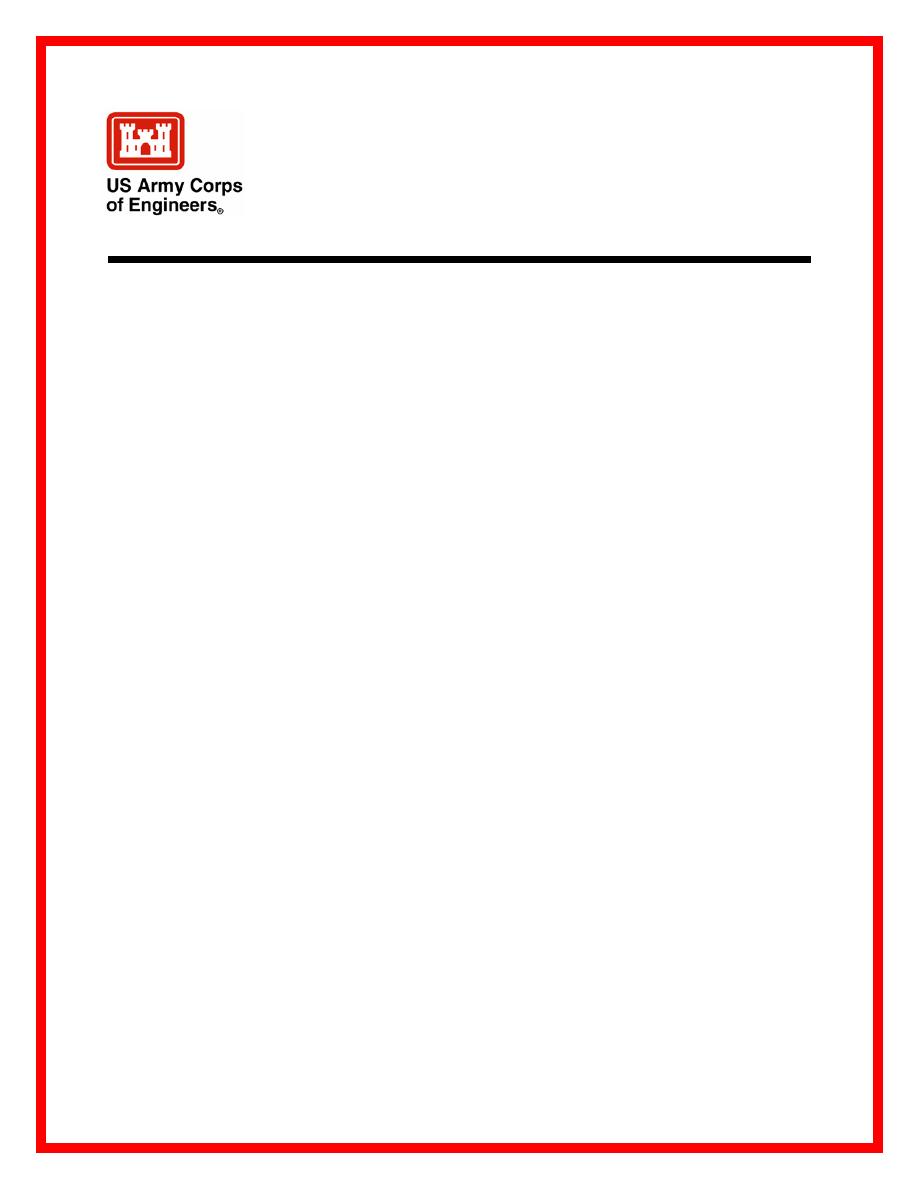
ERDC/CHL CHETN-I-69
March 2005
BOUSS-2D Wave Model in the SMS:
1. Graphical Interface
by Zeki Demirbilek, Alan Zundel, and Okey Nwogu
describe the graphical interface for the BOUSS-2D Boussinesq wave model that has been added to
the U.S. Army Corps of Engineers (USACE) Surface-water Modeling System (SMS). Nwogu and
Demirbilek (2001) give the theoretical background and user's manual for BOUSS-2D and
subsequent technical notes in this series on the BOUSS-2D model will describe updates and
applications of the model.
BACKGROUND: A reliable estimate of the nearshore waves is required in design, maintenance
and operation studies for navigation, channel sedimentation, inlets, harbors, and coastal structures.
The propagation of nearshore waves in these applications is strongly affected by seabed topography,
tidal currents and coastal structures in the areas of interest. The resulting changes in wave
characteristics due to these effects can be estimated using the BOUSS-2D model that employs a
time-domain solution of fully nonlinear Boussinesq-type equations. These represent the depth-
integrated equations of conservation of mass and momentum for waves propagating in water of
variable depth and are uniformly valid from deep to shallow water (Nwogu and Demirbilek 2001).
BOUSS-2D is a phase-resolving wave model that includes the following phenomena: shoaling,
refraction, diffraction, full/partial reflection and transmission, bottom friction, nonlinear wave-wave
interactions, wave breaking and dissipation, wave runup and overtopping of structures, wave-current
interaction, and wave-induced currents.
The governing equations in BOUSS-2D are solved in time domain with a finite-difference method
where the water-surface elevation and horizontal velocities are calculated at the grid nodes in a
staggered manner. The area of interest is discretized as a rectangular grid, and time-histories of the
velocities and fluxes corresponding to incident storm conditions are specified along wave generation
boundaries. Input wave may be periodic (regular) or nonperiodic (irregular), and both unidirectional
or multidirectional sea states may be simulated. Waves propagating out of the computational domain
are either absorbed in damping layers placed around the perimeter of the domain or allowed to leave
the domain freely. Damping and porosity layers are used to simulate the reflection and transmission
characteristics of jetties, breakwaters, and other structures existing in the modeling domain. Details
about BOUSS-2D model are provided in the model theory and examples report (Nwogu and
Demirbilek 2001). SMS (SMS (2005), and Zundel et al.( 1998)) includes an interface for BOUSS-
2D to facilitate the generation of computational grids, specification of model parameters, and
visualization of model input and output. The focus of this CHETN is the description of the BOUSS-
2D interface and guidance on usage of the interface. The BOUSS-2D interface allows users to
interactively construct, evaluate, edit, and visualize finite-difference grids for the model. Users can
define bathymetric conditions, model control parameters, and current, tidal and wave conditions to
be simulated. The interface provides tools for visualizing model results in the form of graphical
images, animations, and tabular output that may readily be ported into engineering study reports.


 Previous Page
Previous Page
